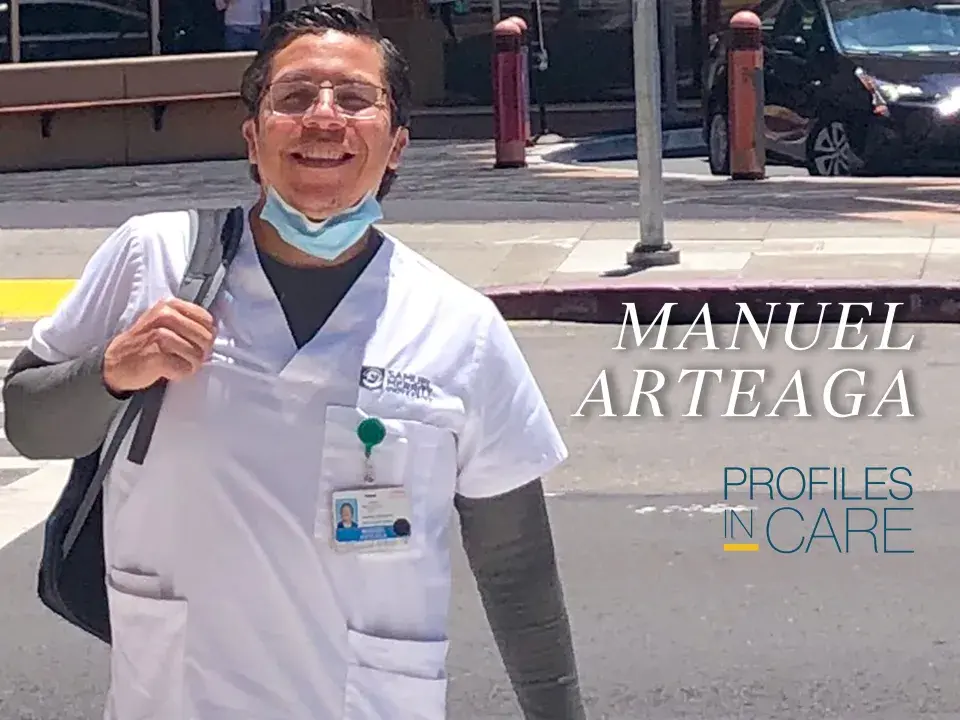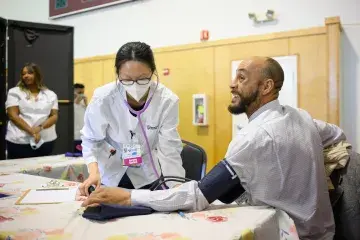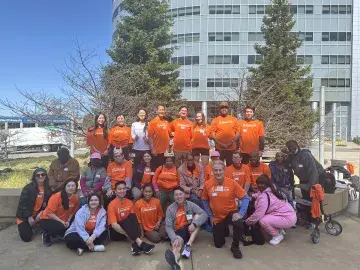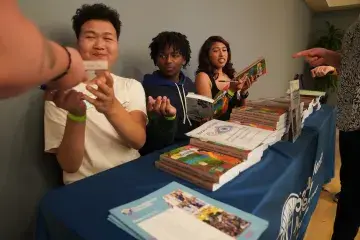Health Disparities, a Two-Tiered System

At 8 years old, Manuel Arteaga, ELMS-CM ’21, saw firsthand the disparities in healthcare that his family sometimes experienced. That’s when Arteaga, the eldest child of Mexican immigrants, began translating for his parents at medical appointments.
He remembers the frustration on his mother’s face when she felt providers weren’t listening and weren’t willing to work through the language barrier to ensure her concerns were addressed.
“The sense I got was that while care was being provided, patient engagement wasn’t there. I saw in my mother a woman who was really engaged and who wanted to understand,” he said. “There was a sense of relief when we would come across people who were very helpful, who empathized with the situation and really went out of their way to create understanding to make the visit successful.”
Arteaga, student in the Entry-Level Master of Science in Nursing - Case Management program, aims for that understanding.
“There’s a huge need for providers who go beyond being professional, more than being skilled and knowledgeable, but who care enough to roll up their sleeves and get involved more in the care of patients,” Arteaga said. “That sometimes goes beyond language. It’s culture, it’s taking the time to ask where they’re coming from. What do they need specifically? What’s their home life like? What’s their family life like? What’s their education level?”
Patients want the same thing
In addition to his parents’ experiences, Arteaga had his own healthcare system challenges. While a substitute teacher back in the late ’90s, he went without healthcare insurance for about 18 months.
“It was a very frustrating experience,” Arteaga said. “It seemed wrong.”
That led him to Ravenswood Family Health Network in East Palo Alto, a nonprofit that provides culturally sensitive primary care services regardless of whether patients can pay or their immigration status. At Ravenswood, Arteaga joined the board. It was a way to give back and learn the ins and outs of running a healthcare center, Arteaga said.
Eighteen years later, he’s still a board member and well-versed in the challenges that healthcare staff face in delivering patient care, obtaining funding, and working with government regulators. So, the idea of going into healthcare wasn’t foreign to him.
During his clinical rotations, Arteaga has enjoyed taking an engaged and empathetic approach to patient care and learning from each patient about the type of care they want and need. Each patient is unique, he said, but ultimately each wants to feel heard and understood by healthcare providers, even as it relates to situations beyond the clinic.
“Many people think of healthcare as something that only happens in hospitals and clinics, but what affects our health most happens outside those settings, in those communities,” Arteaga said. “What I enjoy about case management nursing is working with patients to plan for their care needs post-discharge. My knowledge of local housing, food, and public assistance resources can be an essential component of that assistance.”


